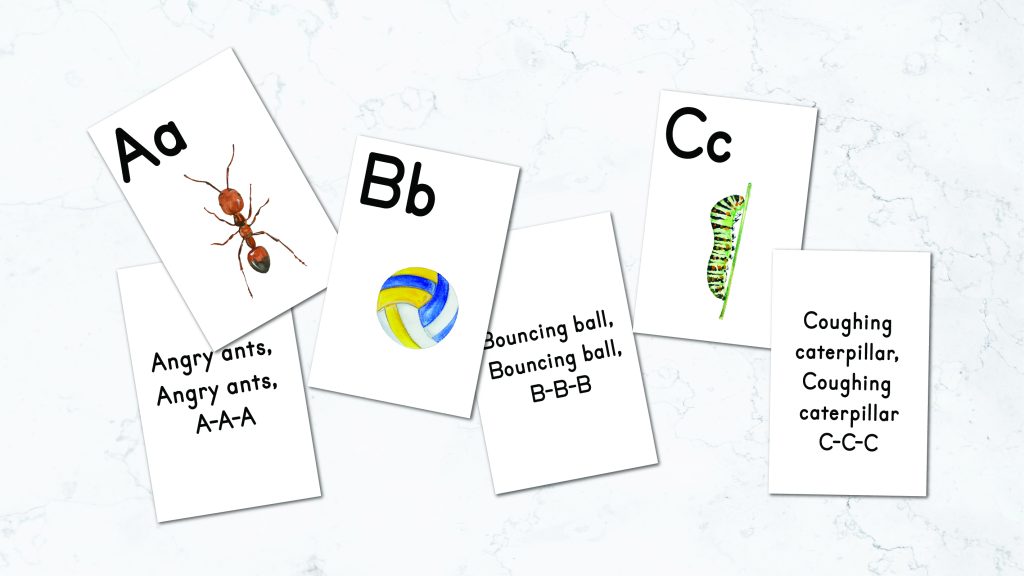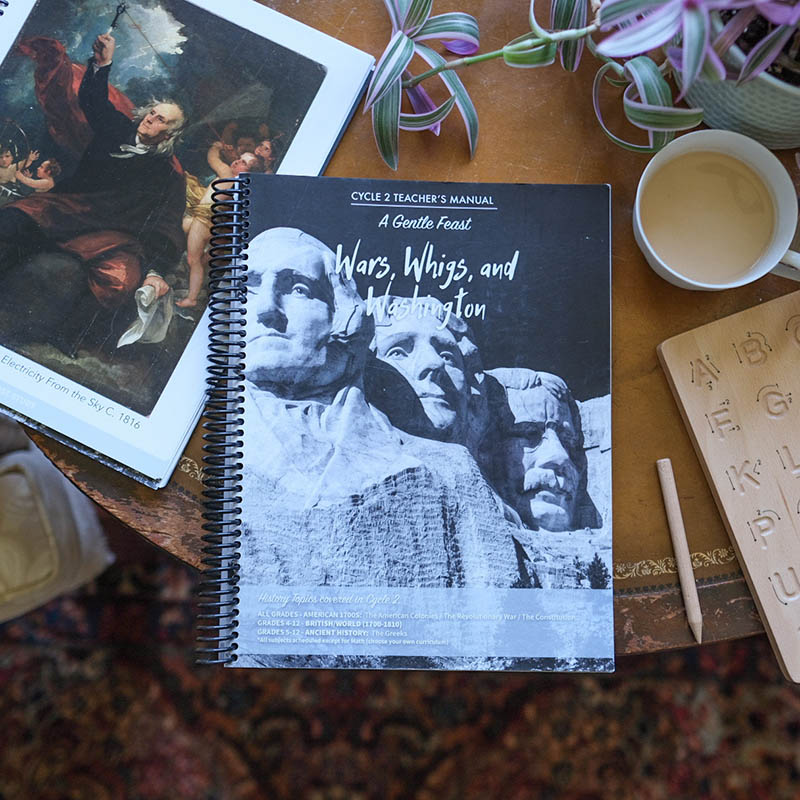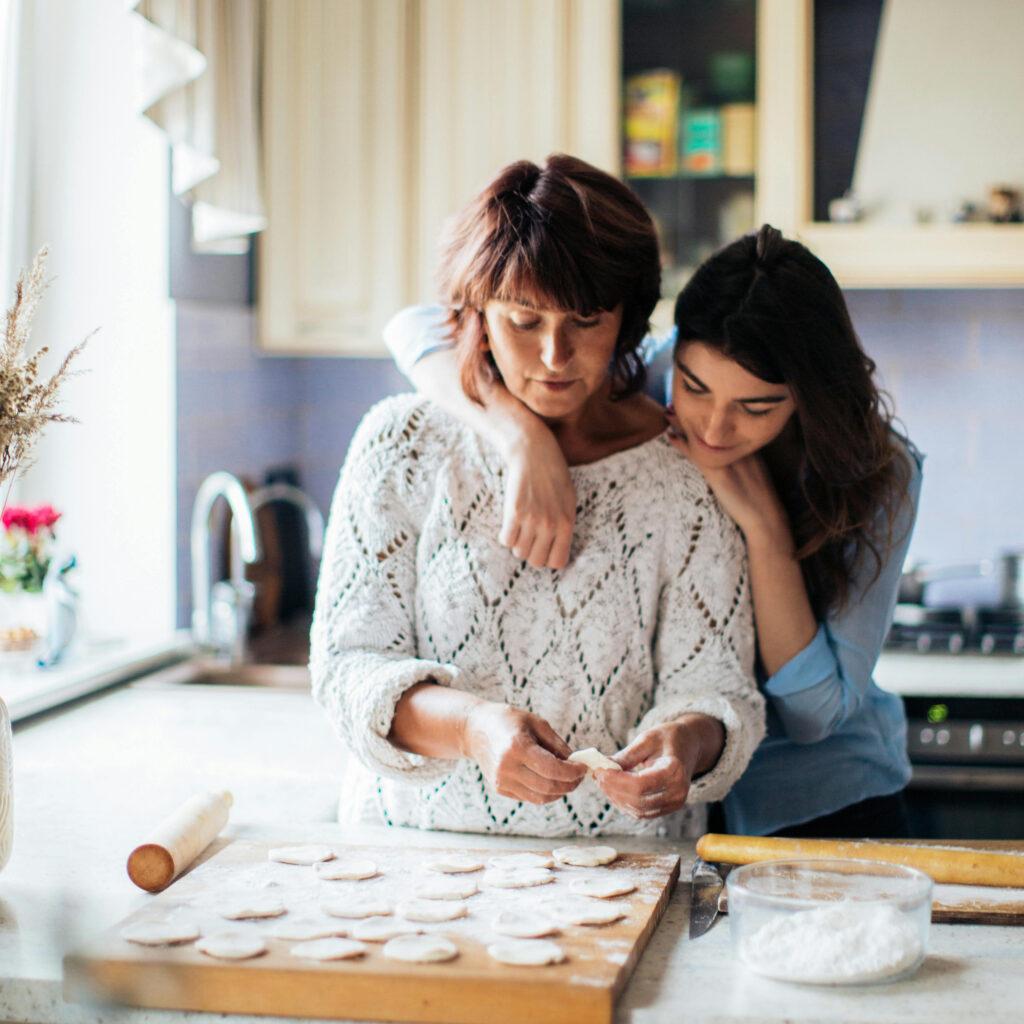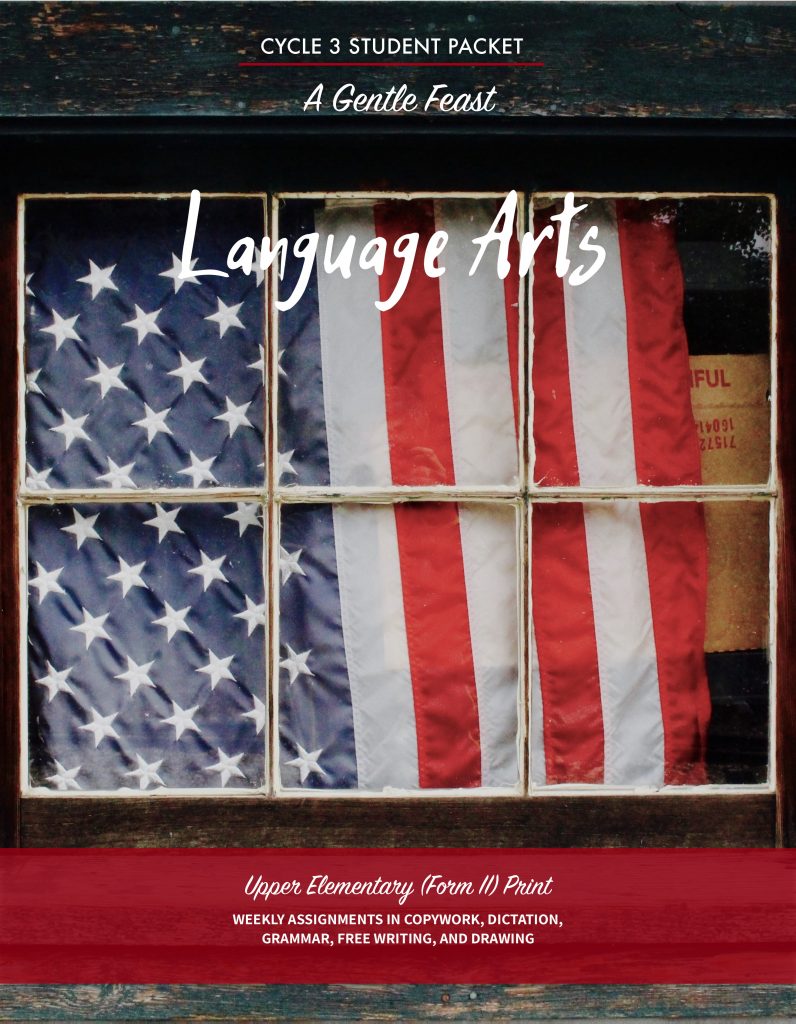Gentle Lessons in Letters and Sounds Level 0 (DIGITAL)

100 Gentle Lessons in Letters and Sounds is based on the natural development of children. Children are able to hear and speak sounds before they are able to visually discriminate or write. Therefore, a child needs to hear and speak sounds before they are ever able to start reading or writing their letters. This “hear and speak” instruction should be done in a playful way, waiting to begin formal reading lessons until the child is ready.
“Let the child alone, and he will learn the alphabet for himself: but few mothers can resist the pleasure of teaching it; and there is no reason why they should, for this kind of learning is no more than play to the child, and if the alphabet be taught to the little student, his appreciation of both form and sound will be cultivated. When should he begin? Whenever his box of letters begins to interest him. The baby of two will often be able to name half a dozen letters; and there is nothing against it so long as the finding and naming of letters is a game to him.”- Charlotte Mason, Home Education, pg.201
100 Gentle Lessons in Letters and Sounds is structured to build a child’s phonemic skills along this developmental path in a playful and engaging manner. Each week contains 4 days of lessons with an optional read aloud and cooking activity based around that week’s letter focus.
Please note this is a digital product. Nothing will be shipped to you. All downloads must be saved to your computer within 30 days.
The lesson components include:
- Nursery Rhymes:
Children LOVE nursery rhymes. They engage a child’s delight and curiosity for learning language. The ability to discriminate and build rhymes is a foundational phonemic awareness skill. Enjoy reading these delightful rhymes to your child each day of the week.

2. Letter Flashcards:
Each letter sound is introduced and reviewed through a playful rhyme. Using hand and body motions, these rhymes engage the mind and body, helping to move the sound-letter connection to long term memory. Feel free to review any flashcards weekly that your child may be struggling with after introducing the new card of the week.
3. Handwriting:
The fine motor skills involved with letter formation typically develop after a child’s oral and auditory letter recognition. Therefore writing with paper and pencil is NOT recommended for this stage. Rather, children should recognize and form their letters through sensory engaging methods. Charlotte Mason recommended the following approach,
“Make big B in the air, and let him name it; then let him make round O, and crooked S, and T for Tommy, and you name the letters as the little finger forms them with unsteady strokes in the air. To make the small letters thus from memory is a work of more art, and requires more careful observation on the child’s part. A tray of sand is useful at this stage. The child draws his finger boldly through the sand, and then puts a back to his D; and behold, his first essay in making a straight line and a curve. But the devices for making the learning of the ‘A B C‘ interesting are endless. There is no occasion to hurry the child: let him learn one form at a time, and know it so well that he can pick out the d’s, say, big and little, in a page of large print. Let him say d for duck, dog, doll, thus: d-uck, d-og, prolonging the sound of the initial consonant, and at last sounding d alone, not dee, but d‘, the mere sound of the consonant separated as far as possible from the following vowel” – Home Education, pg.201

Each week you will introduce letter formation through the letter pieces. Have your child make the letter on the mat. Then have your child trace the letter with their finger, making sure they start at the top and trace down. Later in the week, have your child form the letters in a sand tray. You will want to review letters learned as your progress through the lessons.
4. Phonemic Awareness Activity
Each week there are several activities. These are designed to train a child’s ear and tongue to recognize letter sounds. In a similar manner of how a baby can first hear and understand, children first develop the ability to hear and recognize letter sounds. Then they can orally make these sounds just like when a baby first starts talking. Phonemic awareness develops along a similar pattern- auditory, oral, then visual discrimination. The weekly activities included in 100 Gentle Lessons in Sight and Sound are designed to follow this developmental timeline, gradually increasing a child’s understanding of sounds using their ears, tongues, and eyes.
Each week also includes these optional elements:
- Read Aloud- Each week there is an optional read aloud that relates to the letter of the week. Most of these books can be obtained from the library. These are delightful stories and can easily be read when it is convenient for your family.
- Cooking- One of the aspects of home life that I loved when my children were little was making special recipes. So many skills can be learned in the kitchen! There is a recipe included that ties in with each letter of the alphabet. These of course are optional, so don’t put any pressure on yourself and enjoy as your time allows.

Click HERE to see a sample.
This video shows the motions and sounds for the Alphabet Flashcards:
Want to know more about the theory behind 100 Gentle Lessons in Letters and Sounds, take a listen to this recent podcast:
Not sure which level is right for you?
Got a question? Yo’ I’ll solve it
If you aren’t sure which cycle to start with, watch this video for help: https://vimeo.com/318497753
The History cycles keep repeating all the way through high school. The next time your child is in Cycle 1, they will be promoted to a higher form, thus with new material. You will follow the alternative Morning Time options your second time through the cycle.
Here’s a scope and sequence: https://agentlefeast.com/wp-content/uploads/2023/07/Scope-and-Sequence-2023.pdf
AGF follows Charlotte Mason’s prescription to start with the history of your own country.
Volume 1, pg. 281 “The early history of a nation is better fitted than its later records for the study of children, because the story moves on a few broad, simple lines; while statesmanship, so far as it exists, is no more than the efforts of a resourceful mind to cope with circumstances… In the early years, while there are no examinations ahead, and the children may yet go leisurely, let them get the spirit of history … stir your heart with the story of a great event, amuse you with pageants and shows, make you intimate with the great people, and friendly with the lowly. A child who has been carried through a single old chronicler in this way has a better foundation than if he knew all the dates and names and facts that ever were crammed for examination.”
See this blog post to learn more about Charlotte Mason’s approach to History.
Each cycle currently comes with a Canadian history option. This is digital only and not included in the printed Teacher book.
This chart shows you how the forms in A Gentle Feast are set up in comparison to US grades and the PNEU (Charlotte Mason’s programme)

Watch this video for more details about forms: https://vimeo.com/318499301
This is the main course portal for all the subjects for grades 1-12 except for Math. You will need to add on the other feast courses like Morning Time, Language Arts, and Enrichment separately.
This varies by form, but here is a list of subjects that are scheduled. You will need to access the living books scheduled, but many are obtainable from the library or in the public domain.
Bible Time
Beauty Loop (Poet Study, Picture Study, Composer Study, Hymn Study, Recitation, Fables/Hero Tales)
Literature
Geography (map work and a scheduled reader)
Natural History
Copywork, Dictation, and Creative Writing
Science (forms II and up)
*For Form IV, I have scheduled lessons from Sabbath Mood Homeschool’s Science guides. These guides will need to be purchased separately.
Grammar (forms II and up)
History
Shakespeare and Plutarch (forms II and up)
Read Alouds (forms I and II)
Singing (forms I and II)
Nature Study
French, Spanish, and Latin plans
You will need to provide your own math. I do give a list of my suggestions in the curriculum.
I really want to say true Miss Mason’ recommendations to not start formal lessons until age 6. That doesn’t mean your kindergartener or preschooler sits around all day. They are welcome to listen to the read alouds and participate in morning time, though neither of these should be mandatory. These years are vital for the laying the foundation for learning. I HIGHLY recommend reading Charlotte Mason’s first volume, Home Education during this time. Kindergarten is perfect time to learn letters and sounds using our phonemic awareness program 100 Gentle Lessons Letters in Sight and Sound and learning how to form letters with our 100 Gentle Lessons in Manuscript handwriting.
As a mom of 5 children, I totally get this. One year I had students in every form. I wrote A Gentle Feast with the goal of creating a family-centered program. The morning time brings everyone together with each different level reciting their own poems and reading their own fables. All your children will be studying the same time period, so they can listen to each other’s narrations or you may want to choose one spine to read aloud to several children. The nature study topics can also be done as a family. As Charlotte Mason used forms instead of grades, some of your children will naturally be combined. By looking at the booklist, you can continue to combine further. History and Geography are natural subjects to easily combine. Once students are reading well, I highly recommend each child reading their own literature independently (whether by eye or ear-for dyslexic and other learning exceptions). This can be nuanced and each family is so different. For more specifics, I highly recommend asking for input in our incredibly supportive Facebook group.
In the parent packet, I have included a sample schedule and tips for scheduling your day according to Charlotte Mason’s principles. Depending on when you start, morning lessons should be finished by lunch time. Activities for afternoon tea are included.
Welcome to the beautifully rich world of a Charlotte Mason Education! I created AGF to provide families with the hand holding I wish I would’ve had when I first started homeschooling. When you purchase AGF, you get an Introduction Course where I teach you how to get started with the curriculum and the foundational principles of A Charlotte Mason Education. In the parent packet, I walk you through how to approach each subject in a Charlotte Mason education. I also HIGHLY recommend reading For the Children’s Sake by Susan Shaeffer Macaulay. You can also sign up for my free beginner’s course HERE.
Since we follow the philosophy of Charlotte Mason, we have built our curriculum on her principles which need to be understood in order to use the curriculum in the most effective way. Miss Mason states in principle 20: “We allow no separation to grow up between the intellectual and ‘spiritual’ life of children, but teach them that the Divine Spirit has constant access to their spirits, and is their Continual Helper in all the interests, duties and joys of life.”
Another helpful quote by Miss Mason is:
“This idea of all education springing from and resting upon our relation to Almighty God-we do not merely give a religious education because that would seem to imply the possibility of some other education, a secular education, for example. But we hold that all education is divine, that every good gift of knowledge and insight comes from above, that the Lord the Holy Spirit is the supreme educator of mankind, and that the culmination of all education (which may at the same time be reached by a little child) is that personal knowledge of and intimacy with God in which our being finds its fullest perfection.”
I would also encourage you to think through what a Christian worldview truly means. Charlotte Mason’s view was not to give children cleaned up moralizing books with only one viewpoint. She believed that all true ideas were divinely inspired and that these ideas were best conveyed through living books, nature, and beauty. See here for more information on a sacred education: http://www.asacrededucation.com/a-sacred-education
You can read more about this in this wonderful article by Becky Anoi here: https://charlottemasonpoetry.org/charlotte-mason-and-worldview-formation/
You can read Charlotte’s words here:
https://charlottemasonpoetry.org/moral-instruction/
https://www.amblesideonline.org/PR/PR07p052GreatRecognition.shtml
This article sums up the philosophy for science books:
https://sabbathmoodhomeschool.com/2017/07/must-we-read-only-christian-authors/
A Gentle Feast is pleased to offer a discount to all active military and missionaries (not church staff) who rely solely on support. If you would like more information, please email info@agentlefeast.com.
Another helpful quote by Miss Mason is:
“This idea of all education springing from and resting upon our relation to Almighty God-we do not merely give a religious education because that would seem to imply the possibility of some other education, a secular education, for example. But we hold that all education is divine, that every good gift of knowledge and insight comes from above, that the Lord the Holy Spirit is the supreme educator of mankind, and that the culmination of all education (which may at the same time be reached by a little child) is that personal knowledge of and intimacy with God in which our being finds its fullest perfection.”
I would also encourage you to think through what a Christian worldview truly means. Charlotte Mason’s view was not to give children cleaned up moralizing books with only one viewpoint. She believed that all true ideas were divinely inspired and that these ideas were best conveyed through living books, nature, and beauty. See here for more information on a sacred education: http://www.asacrededucation.com/a-sacred-education
You can read more about this in this wonderful article by Becky Anoi here: https://charlottemasonpoetry.org/charlotte-mason-and-worldview-formation/
You can read Charlotte’s words here:
https://charlottemasonpoetry.org/moral-instruction/
https://www.amblesideonline.org/PR/PR07p052GreatRecognition.shtml
This article sums up the philosophy for science books:
https://sabbathmoodhomeschool.com/2017/07/must-we-read-only-christian-authors/
Shipping Policy
We usually ship orders within 48 hours. EXPEDITED SHIPPING does not accelerate WHEN your product will ship. You’re simply upgrading your shipping method to Priority (2-3 days) rather than Media Mail (7-14 days). We ship as orders are received and do not prioritize based on the shipping method selected. If you want insurance, please select Priority shipping.
ALL MISSING ORDERS AND/OR DAMAGED ITEMS MUST BE REPORTED AS MISSING OR DAMAGED WITHIN 30 DAYS OF THE ORDER DATE. WE CANNOT ASSIST WITH MISSING OR DAMAGED PRODUCTS IF NOT REPORTED WITHIN THAT 30 DAY TIME FRAME. *We will not offer a refund until your item has been in the carrier’s hands for at least 30 days for USPS.
Order Mistakes
If you purchased a printed item by mistake, you must let us know immediately to see if you can get your purchase canceled. After 24 hours, no changes may be made and you will have to follow our refund policy below.
Refund Policy
Digital products are NON-REFUNDABLE. This includes the main course lesson plans for each cycle. Please preview samples and make an informed decision before purchasing.
All digital pdf product downloads expire in 30 days. This is clearly marked on the receipt you receive with your purchase and on the product links. We will not be responsible for any downloads that are not saved. We recommend downloading onto Google Drive or Dropbox so if your computer breaks down, you still can access your product. We can’t reissue downloads for any reason.
For physical/print products, change of heart returns are discouraged, however completely unused material may be returned within 30 days of shipping. The customer will be required to package the item thoroughly and pay return shipping, including insurance. Once the item is inspected and deemed in “like-new condition,” you will receive a refund. If a return is received that is NOT like-new, no refund will be given. Email info@agentlefeast.com for refund approval and our return address.
Exchanges:
We are unable to do exchanges at this time. If you need to exchange a product, we recommend that you purchase the product you would like and return the original product.
Other Notes
The online lesson plans and all digital pdfs are for your individual use only. These may not be resold or shared with others. Please respect our copyright and the hard work we have put in to creating these products.
Here’s some helpful information:
Using the Charlotte Mason Method in High School YouTube playlist
Making transcripts for multiple history streams
Testimonial of an older student starting this curriculum
Absolutely! We love working with families to provide this rich living education in a variety of settings.
Here is all the information: https://agentlefeast.com/schools-and-co-ops/
the votes are in!
“What I LOVE”
– Theresa P
“given me a great rthythm”
– Becky M
“gain a love for learning”
– Amanda S
– Alexis W
you might ALSO ENJOY
The Community
WHAT ARE YOU WAITING FOR?
Ready to Create a Life and Homeschool You Love?
You don’t have to figure this all out on your own.
At A Gentle Feast, we are here to support you in your homeschool journey with our award winning tools and resources. Try two weeks FREE today

Ready to simplify your homeschool?
Get all the parts of the Feast for one low monthly price!
We are now accepting
Founding Members for
The Feast Table Membership for the 2025-2026 school year!
© 2024 A Gentle Feast | ALL RIGHTS RESERVED






